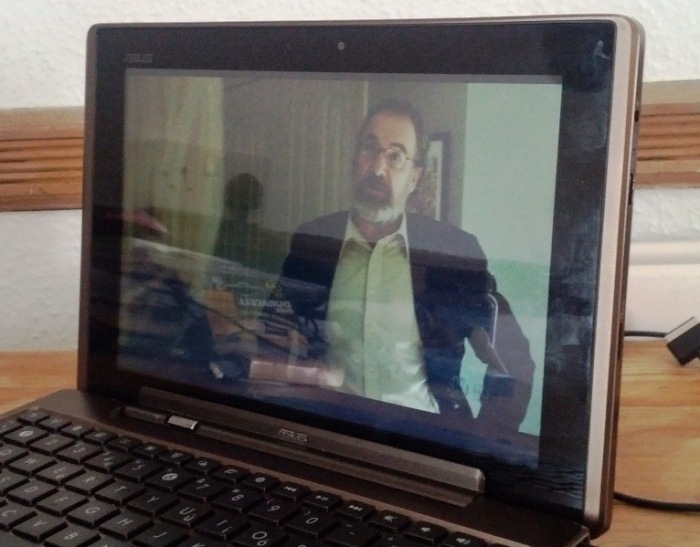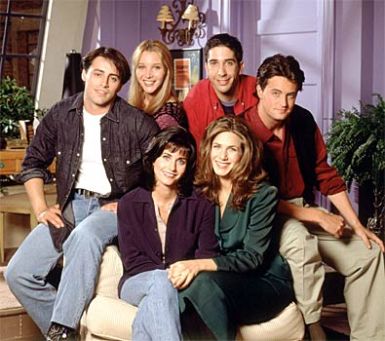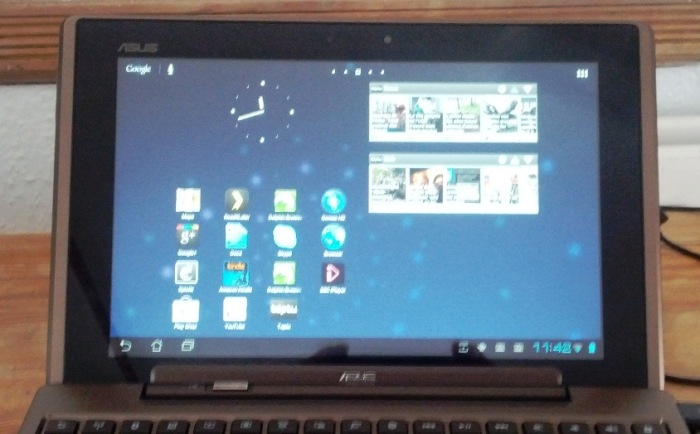The book the world doesn’t need right now
A piece on CNN.com the other day titled “The novel America needs right now” managed to conflate two wildly separate phenomena that I thought deserved separating back out. Mark Bauerlein writes that:
Adolescence used to be a condition you escaped as soon as you could, but these 20-somethings want to prolong it.
We need to counteract them, to restore embarrassment to adolescent habits, and books are a key weapon.
(go ahead and read the whole article, it’s at least interesting)
The trouble is, these two things have almost nothing to do with one another. It’s all very well bemoaning the endless YA fiction that’s stolen the literary limelight, but saying that its popularity is all down to “pre-adults” seems wilfully blinkered. Books like Harry Potter and Fifty Shades of Grey have been seized on not just by twenty-somethings but by their parents and by the newspapers and other cultural outlets that guide their reading choices. You could buy Harry Potter hardcovers with “grown-up-looking” dust jackets so that your fellow commuters on the train wouldn’t know you were reading a kids’ book, for Christ’s sake.
Now there’s a perfectly good discussion to be had about why so many people are reading YA fiction at the moment (in my case I mostly blame boingboing) but it’s clearly not just down to the “Twixters” (awful word that makes it sound like 20-somethings are all sitting on the sofa stuffing ourselves with Twixes). I’ve grown pretty tired of YA stuff myself (The Hunger Games was the last straw) and gone back to reading Stendhal for a bit.
Bauerlein’s wider point, though, about the idea that “pre-adulthood” needs to be “exploded”, its “creep” halted, its “trendy pose” “taken down”, is pretty unfounded. Who’s to say that it’s a bad thing that people are living with their friends, trying out different jobs and relationships, and (horror of horrors) playing video games well into their 20s?
After all, what’s the alternative? Settle down into the late 20th century paradigm of a marriage that’ll most likely end in divorce supported by a job that’s whatever someone told you about that sounded just about bearable at a careers evening in your last term at school?
There doesn’t seem to be any recognition on the part of the pre-adulthood bemoaners that times have changed since the 1950s, when “most people completed their translation to adulthood – finishing school, finding their first job, marrying and having children ‘by age 21 or so'”. Apart from anything, life expectancy has gone up about 10 years in that time. Women’s lives have changed beyond recognition. I don’t know any women my age who would have been anything other than horrified to be pregnant at age 21. I don’t know many people who have a job now that they’d want to be doing until they’re into their 70s either (that is, if any of the jobs that are around now still exist when my generation hits 70). In the cold light of what’s actually happening in the world rather than patchily-remembered 1950s fantasies of the good life, the idea that indulging in a bit of pre-adulthood is anything other than a reasonable response to how the world is looks a bit laughable to me.

Life expectancy, or “Stop those people! They’re enjoying all those extra years progress has given them!” Image credit and key: Wiki
Let’s not forget – the people complaining are the people who’ve made the world this way. They’re the ones who sat back while Western economies gambled themselves off a cliff, leaving us to pick over the unsatisfying bones for gainful employment, who made Friends the defining cultural phenomenon of our childhood and early adolescence, and who struggled for the freedom to not be a kitchen-bound housewife that women are now enjoying.
So three cheers for pre-adulthood, long may it continue. But I’m all in favour of someone sending up the Twilights and the Hunger Games of this world. There’s plenty of puffed up mediocrity out there posing as culture that needs deflating. Sharpen your pens, people.
Most fun translating German… ever? Interview w/German 2-man bob team for CNN
Translating the interview with these two characters was great fun – there were a lot of laughs! I’m not sure how many of them come across in the video, but you do have to make some compromises with the subtitles. Spent a very enjoyable day sitting in with the editor for this piece and getting the subtitles pitch perfect.
Interview with President of Hertz International
I produced this shoot for CNNI’s business show Marketplace Europe – did lots of background research on Hertz for reporter Jim Boulden, accompanied the camera crew down to Heathrow and so on.
Interview with President of BT Global Services
I conducted background research for reporter Max Foster for this interview and accompanied him up the BT Tower for the shoot – quite the opportunity since the Tower isn’t open to the public! Great views of London that you won’t get anywhere else (and the interview is pretty interesting too).
Helping out with Bond 50th at CNNI
Thought I’d post a few of the stories I worked on this month while I’ve been at CNN. I was pretty lucky to start work just when the Features department were doing lots of Bond-related stuff for the 50th anniversary. Many thanks to Neil Curry for getting me involved with all these pieces!
This piece on Bond vehicles saw us taking a very early morning road trip down to Beaulieu to the National Motor Museum. The curator had been doing interviews all week so he had his patter down just about perfectly.
This piece featuring Bond stuntman Vic Armstrong was the first time I’ve been sitting behind the camera asking the questions. I also got to sit in one of those film-director canvas folding stools, which was pretty fun. Vic’s autobiography True Adventures of the World’s Greatest Stuntman is a good read if you’re a fan of Indiana Jones, James Bond, Star Wars etc. – he’s worked on all of them and more.
Visiting Bond theme composer Monty Norman’s house was great fun as he had the original James Bond theme score and some great stories about the early days of the franchise. I didn’t horrify him with my rendition of the theme on the piano.
The interviews with the Bond girls from the premiere of Everything or Nothing are from my first day at CNN. I wasn’t expecting to leave the office but ended up sticking a mic in Charles Dance’s face at the premiere (I managed to sneak in some questions about Game of Thrones too!).
Two weeks of tech writing
I’ve been working at the Telegraph for a couple of weeks to get my hand back into news writing after a year as community manager at Demotix. I was a bit rusty for the first couple of days but I think I soon got back into the swing of things.
I thought I’d round up the stuff I’ve been doing for future reference, so here’s 10 days’ worth of tech articles. Some of these (ok, especially the video game review) were particularly fun to research and write about.
Tablets one of the fastest growing technologies in history
New search engine aims to Google the real world
Facebook members desert Zynga’s Farmville and Cityville
Apple’s Siri sued for failing to live up to hype
Computing GCSE to focus on programming
Habbo Hotel to reopen chat rooms after sex scandal
Microsoft tablet surfaces to mixed reaction on Twitter
Nigerian email scams deliberately implausible
Internet activity could help diagnose depression
BBC iPlayer to let viewers rewind live TV
What’s in a Community Manager’s Toolbox?
A quick writeup of last night’s London Community Managers meetup for the benefit of anyone who wasn’t there. Props to Elana Zak for organising and moderating the whole thing, and for coming up with the questions for the panel.
On the panel were @BlaiseGV (hereafter “Blaise”), @Ninja_Bytes (Ngan), @MAJohns (Mark) and @lucaben1n1 (Luca).
What CM tools do you use?
Blaise gave the first and most pragmatic answer – “use the tool that’s right for the job”. Since there are plenty of free tools around it’s easy to find one that suits you – just make sure you can export data easily and watch out for API changes that could leave you scrabbling to fill a sudden hole in your workflow. Ngan namechecked Tweetdeck for Twitter, Gremln for monitoring cross-platform conversations and posting short URLs, and Facebook Analytics – “really useful for a free tool”.
Mark pointed at HootSuite – “simple and powerful enough” to introduce journalists to participating in social media, and SocialFlow for its valuable scheduling and publishing from RSS features. He also took the opportunity to big up The Economist’s own commenting system – “we prefer to be in command of our own destiny” is how he explained the choice to stay away from Disqus or similar.
Luca works for BuddyMedia. He explained what the company does (building off-the-shelf multiplatform tools for community and social media managers). He highlighted (as others already had) the ability to export data as critical for a really good tool.
Free or paid apps – remember, CMs (usually) have a limited budget!
Luca pointed out that agencies have a particular need for paid tools – managing thousands of client pages at once is another step up again from the in-house community manager as power user. “What brings you as an individual to use TweetDeck… brings large organisations to go another step with technology that works at a different scale.” Ngan agreed, but pointed out that for an in-house CM a paid app might only become worth it when it has a feature that will have a big impact on your work and that you can’t find elsewhere.
Mark agreed, saying “The time you know you need to upgrade to a paid app is when you realise you’re not getting what you need [from a free one].” He pointed out that paid apps also mean there’s a chain of accountability – they’ll generally keep track of who’s doing what if a tweet about breakfast goes out on the company account. Blaise took this a step further, saying that big businesses are almost certain to pay for reliable data and accountability when something goes wrong. On a personal level, his rule is “if it’s going to improve your productivity, it’s worth paying for – your productivity is stunted by being active on social media anyway!”
What tools are definitely worth paying for?
Ngan advocated for Omniture with its in-depth analytics and data – she’s been using it at EA, but she’s looking forward to playing with Radian6, Sysomos and BrandWatch at her next job. Blaise noted that brands will be worried about libel on social media, so a tool like Conversocial could keep the lawyers off your back by surfacing otherwise-hidden postings. He also mentioned SproutSocial for making FB Analytics pretty, and the “very expensive” Tableau for making pretty graphs fast.
Some audience members chimed in on the various advantages of Sysomos’ tools, such as Heartbeat, discussing different use cases. This is when the conversation came back around to APIs, with Luca pointing out that “as a tool provider, you’re very much reliant on what’s open for you to innovate with” – citing the few third parties invited to work with the G+ API. He did point out, though, that in Russia or China platform providers are “completely unused to the idea” of providing an API in the first place.
Mark got some laughs by saying that he would murder for a tool to bring together all the conversations happening on-site and on different social media platforms – “whether that even makes logical sense or whether people will look at it and shake their heads I don’t know!”
What tools do you wish could be developed to make your jobs easier?
Luca lamented the lack of a reliable way of defining sentiment for listening tools, remembering that many attempts end up with your tech being as reliable as a coinflip. “The best listening tools are humans,” is the conclusion for now, something Ngan agreed with strongly.
An audience member shouted out that there should be a tool to prove the ROI of good community management – Blaise agreed and noted that too often CM activities are divided into buckets that should really all be part of the same flow. Luca suggested that this was an avenue BuddyMedia would be exploring in future, but Blaise sounded a note of warning, saying “we’re stepping further and further away from the actual people who we’re supposed to be interacting with.” Mark agreed – “we should never get carried away with our own cleverness, it’s about hard work too.”
Wrap-up
And that was that, apart from some quick discussion about best sources of info for new tools (names thrown out were TWitter, Mashable, Engadget, Crunchbase and 10,000 words) and a quick 2-minute pitch from SoDash, a company that hopes to solve the sentiment problem using artificial intelligence from Scotland.
Hope it was useful and thanks for reading!
Trolling is not synonymous with stalking or threatening people online
The UK national media have recently discovered the word “troll” in its internet sense. Unfortunately, every last journalist I have seen using it has deployed it incorrectly. For instance, the stories about Liam Stacey (he of the Fabrice Muamba tweets), or Frank Zimmerman (he who threatened the children of Louise Mensch).
The trouble is that neither of these men were trolling. That they were being unpleasant in a general sense is not in doubt. That they were directly, personally cruel or bigoted is not in question. But this is not the definition of trolling.

"Coolface" became the emblem of the 4chan trolls (image cribbed from Wikipedia)
My experience of trolling comes from 4chan (and that’s not something you often see someone admit in polite society). 4chan is that terrible place you’ve heard about where everyone is Anonymous and there are no rules. It’s the origin of many of the memes that have swept the internet, and it’s the current spiritual home of trolling (although the term has a storied past).
What defines an act of being stupid, aggressive or irritating online as trolling is all about motive. Trolling is about wearing a mask, adopting a pose to elicit a response from people who (in the troll’s eyes) take internet discourse too seriously. It’s almost never about communicating your own opinions accurately and honestly, which is why neither of these men are trolls.
I’ll give an imaginary example from 4chan’s /g/ board, which is nominally dedicated to discussing Technology. In practice, this generally means fanboi-ish flame wars between fans of Apple and fans of other technology (hardware and software). Apple tech arouses strong passions in both its adherents and its detractors; to the former, it’s finely-crafted, impeccably tasteful, user-friendly; to the latter, it’s over-priced, restricting and patronising.
So, a trollish post on Technology, aiming to stir up the Apple debate yet again, might go something like this:
“I enjoy buying and using Apple products. I know that the user interface has been crafted to exacting specifications by consummate professionals, that I will not be exposed to virus-ridden or poorly-designed third-party apps, and that simply owning an Apple product will be an outward sign of my creative soul and higher-than-average salary.”
The troll probably doesn’t believe a word of this. He most likely doesn’t care one way or the other about the issue. He wants to see easily-riled Android, Windows or Linux fans crafting an excoriating response to the smug, superior, supercilious Apple user they imagine to be behind the post. He wants to see Apple fans stimulated by these outpourings of rage into wasting their valuable time responding to the responses.
The key point to take away from this is that the troll identifies an emotionally charged, powder-keg debate in which he can play the mischievous soul who lights the blue touch paper and runs. Apple versus the rest of the tech world is classic troll fodder (other easy targets include discussing the relative merits of Dungeons and Dragons versions 3 and 4 on the “Traditional Games” board, or of the Kalashnikov and Armalite rifle families on the “Weapons” board, or Christians versus Atheists, liberals versus conservatives, and on and on).
The troll himself has no emotional horse in the race. He just wants to sit back and watch the fireworks that reward what he sees as his cleverness in identifying a weak spot in a community.

This comic (starring 4chan founder Moot) illustrates a fairly basic form of trolling
This means that weirdos stalking Louise Mensch or racists posting drunken obscenities while a black man lies dying on a football field are categorically not trolls. Whatever your opinion of those two cases, the men involved were most definitely personally attached to the opinions they were expressing. While trolling can and does fracture, damage and occasionally destroy online communities, simply being unpleasant or cruel in some online arena is not enough to qualify as trolling.
Trolling is closely tied up with the Anonymous culture that sprang out of 4chan and its many clones and imitators. It’s an affectation, an act of mockery aimed at people with strong feelings about social, political or other issues by those who claim not to care. Among trolls, Heath Ledger’s watching-the-world-burn role as the Joker in The Dark Knight was an instant role model and memetic goldmine.
I’d actually be sad to see the kind of trolling I’ve described here disappear from the net. Responding to a troll post and realising too late that you’ve been played is a key learning experience for anyone taking part in online discussions. That sense of intellectual shame for not having noticed the over-played nature of your baiter’s words is a valuable life lesson, particularly for journalists. “Just how plausible is this online text which I am taking so seriously, anyway?” is a question we should all be asking ourselves constantly. Learning to identify trolls by getting burned once or twice could mean that you take the time to identify something much worse later in your career.
6-month review: Asus EeePad Transformer
I’ve always loved mobile devices with keyboards. My first smartphone was a Motorola Milestone, and I later upgraded to a HTC Desire Z. The iPad frenzy of 2010 passed me by, as I wondered why people would want a laptop-sized device with no way of inputting more than a few lines of text comfortably (I wouldn’t, for example, write this review on an iPad). Then, in 2011, up popped the EeePad Transfomer:
It looks like exactly what I wanted – a device that could be a tablet when that made sense, and with a functional keyboard when you need to enter more text. Asus have even thought about the concept for more than five seconds and included an extra battery, USB ports and an SD card slot on the keyboard half of the device, making the Transformer a serious value proposition compared with Apple and other Android tablet makers’ less well-endowed offerings.
I was previously schlepping a cheap MSI netbook bought at Argos around, so on first taking it out of the box the Transformer felt like a serious step up. It feels like a well-built piece of kit, with a metal bezel, Gorilla glass front and tread plate-textured plastic backing. The keyboard section is all-metal too, and feels reassuringly solid. Unfortunately, this didn’t quite live up to appearances, as you can see from the photo below.
This is the port you plug the power cable into when the tablet is plugged into the dock, and it looks like it’s a structural weak point. This resulted from one too many times placing the tablet down while inside its protective case, inside my shoulder bag. While I probably could have been more careful with it, I’d suggest that this section in particular (around a vital port!) should be better supported – it wouldn’t have buckled unless relatively hollow behind. Fortunately, the port still works, and the damage isn’t too conspicuous.
But on to the most interesting bit of tablet hardware: the screen. The screen on the Transformer is, without a doubt, fantastic. It’s bright, high-enough resolution for what I need it to do and responsive to touch. It’s so handy as a touchscreen device that I usually disable the mousepad even when I’ve got the keyboard plugged in, and just navigate through apps and the web directly on the screen (not as uncomfortable as some people, including Steve Jobs have argued).

The screen is bright, colourful and boasts pretty good viewing angles - here it's playing back an episode of Homeland.
This has even worked pretty well during extended use, like while live-tweeting day-long conferences – I used the Transformer to tweet all day long at the London Conference on Cyberspace in 2011 and at the far more enjoyable ORGCon 2012. Find a Twitter client that’s happy on a tablet (I like Plume) and the keyboard makes Twitter almost too easy.
I’m not going to go too far down the road of “apps comfortable on a tablet” since enough has been written about the lack of them for Android 3 and 4. Despite several software updates and jumping an OS version, though, the Transformer still has a few flaws. The most irritating is a dialogue box which pops up at random intervals announcing that “android.process.media” has to close, with no response possible but “OK”. Googling and forum surfing has revealed that this is a far from uncommon problem, and none of the suggested fixes have worked for me so far.
The second issue is a tendency to lag unpredictably. Sometimes I’ll be futilely pressing at a button for two or three seconds before getting a response, and there are times when a significant delay occurs when switching apps or jumping back out to the homescreen.
These aren’t uncommon problems with Android devices, and more likely than not a problem endemic to shoehorning the same software onto all manner of different hardware combinations (not unlike the perennial problems with Windows). For what it’s worth, Asus have been very sparing with customisations to the operating system, offering some apps of their own (generally not much cop compared with other options available on the market) and a few widgets which may or may not be to your taste. Other manufacturers could take note of this (I’m looking at you, Motorola) and it’s probably been a factor in the Transformer’s getting the Ice Cream Sandwich update so quickly.
Would I still buy the Transformer, knowing what I know after owning it for 6 months? That depends. It’s very capable for some tasks – tweeting and note-taking using the keyboard, reading the news in bed or on the sofa when detached – that you don’t really need a full-fledged laptop for. It’s got a fantastic screen and the UI is only getting more responsive with updates.
I often found, though, that when working, you miss the quick task-switching, easier copying and pasting (it’s still a pain on a touchscreen) and other productivity must-have that you’d get from a more traditional device. I don’t doubt that future Android versions and the tablets that run them will address this, but for now I’ve gone back to a relatively boring Samsung laptop running Ubuntu. It’s faster and I get more done (I have to suspect for lack of some of the shiny distractions that come with a tablet, as much as anything else).
For play and some specific work tasks, the Transformer is great, but there’s (for now) no getting away from a PC when you really need to Get Things Done.
3-month Review: Motorola Droid RAZR
A lot of tech sites give you a review based on a journalist getting a phone in the post and spending a day – or if you’re lucky, a few days – playing with it, running benchmarks and battery tests, and maybe even taking it out of the office for a test drive. I thought I’d do something a bit different and give you my impressions of a device after a few months of using it every day.
I won’t lie: I was really excited when I heard that Motorola were launching another phone with the Razr brand. The original Razr was probably the phone that kick-started my love affair with technology – remember how amazingly thin it seemed in 2005? Many of Motorola’s Android phones, meanwhile, have been near-universally praised, starting with the original Droid/Milestone, which I owned and loved for over a year.
So how does the new Razr look after 3 months bumping around in my jeans pocket? The first thing I have to mention is the build quality. Yes, the screen is lovely Gorilla Glass, which has withstood drops, keys, coins and even a safety pin I tried on the corner. Yes, the back is smooth, tough Kevlar, which feels great to the touch and hasn’t got a mark on it either. But the edges are made of your basic run-of-the-mill ABS plastic, and unfortunately you can’t say the same about that.
This is the corner of the Razr’s plastic bezel after dropping it once or twice over the whole time I’ve owned it. You can see that even short drops from hand height onto tarmac have caused deep dings in the plastic, which look quite unsightly even now there’s been some time for the rough edges to wear off. There’s no doubt that the phone’s stainless steel core and high-quality front and back materials make it feel tough (and this is purely cosmetic damage, let’s be fair) but this feels like a corner-cutting oversight on what was supposed to be a flagship phone.
This takes us on to the phone’s major selling point – that 7.1mm thin body. It is almost unbelievably thin when you look at it, but that doesn’t necessarily make it a joy to use. In fact, given its size, it becomes almost a disadvantage. Particularly when trying to use it with one hand, manoeuvering around the screen often means that you’re putting the phone in a precarious position where it could get dropped, and the distribution of the phone’s weight across a wide, flat surface increases that risk quite seriously. It can feel like manoeuvering your thumb around the surface of a playing card resting on your palm and fingers.
The squared-off edges and extra-wide bezel compared with the width of the screen don’t help, and I’ve found the rounded back and slightly narrower face of the Galaxy Nexus much easier to deal with since switching. It feels like the Motorola design team pursued svelteness at the expense of usability, which is a shame.
Speaking of usability, how about that software? One of the big features Motorola launched with the phone was Motocast, a program you can install on your PC which then allows you to pull all your photos, music and video from there to the phone over a Wifi or 3G connection.
This is a great idea in theory, but it suffers from the classic problems of proprietary phone-link software: it’s clunky and unintuitive. I tried it for a while, but quickly grew frustrated with the ugly interface of the Motorola Music app on the phone, as well as its inexplicable inability to sort tracks by their track numbers on the album when I _knew_ they were present and correct in the ID3 tags. I quickly found mysef switching back to an old favourite app of mine, the open-source Subsonic, which does pretty much the same thing as Motocast for your music collection, but a lot less obtrusively.
Already having a fallback solution in place for this feature cushioned the blow, but what really bothered me about the Razr was the call quality. I frequently found myself being asked by people to speak up mid-conversation, something that’s never happened to me when using a Motorola phone before (and I’ve owned a few). Given that Motorola can and does sell itself on its long experience and enviable patent portfolio in mobile telephony, it’s troubling that this phone wasn’t giving me the same quality as the HTC Desire Z I was using before.
The camera was just as much of a disappointment. I never found myself pulling it out to snap passing moments of interest the way I have with other Android phones I’ve owned – it just felt too unreliable. Although I managed to get occasional worthwhile shots out of it, the extremely limited number of adjustable settings in the software made it feel like these were serendipitous gifts from the camera gods, rather than the result of experimenting and repeating what worked. The strange weight distribution of the phone also worked against taking decent images – it might have been easier with a dedicated shutter button.
All of this is a shame – I really wanted to like the Razr (not least because I bought it before many of the reviews were out – once burned, twice shy!). Unfortunately, it turned out to be one of those gadgets where the key features are subordinated to the questionable cause of being the biggest, the fastest, or the thinnest, no matter how transitory that title may be (and I have no doubt there will be thinner phones around, although the current standard seems to have settled around 9mm). Next time, Motorola might want to make sure that their device makes sense as an everyday phone as well as a technology showpiece.








